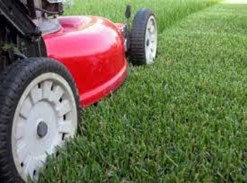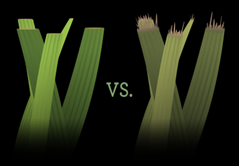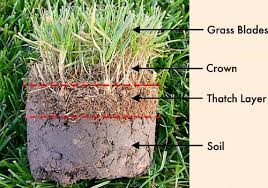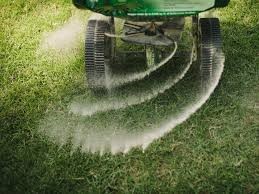
Lawnmower Maintenance
 The first thing you want to do is to sharpen your lawnmower blade. A dull blade
will tear the blades of grass rather than cutting them. This will make your lawn
more susceptible to disease and may cause it to turn a dull brown colour.
The first thing you want to do is to sharpen your lawnmower blade. A dull blade
will tear the blades of grass rather than cutting them. This will make your lawn
more susceptible to disease and may cause it to turn a dull brown colour.
Your first mowing should be at a height of approximately 1.5 inches. In the
following weeks, raise your mower one notch at a time until you reach a mowing
height between 2.5 and 3 inches. This length helps shade your roots and provides
more leaf surface for your lawn to manufacture its own food. The proper height
also helps your lawn retain its moisture during the warmer Summer months. As a
rule, never remove more than one-third of the leaf blade in a single cutting.
Proper mowing will help maintain the health and appearance of your lawn, and
will make it difficult for weeds to grow in.


 Look at your lawn and ask yourself these questions: Is the lawn green on top but
brown on the bottom? Does it look brown and dead after it has been mowed?
Does the lawn feel "spongy" when walked on? If you answered yes, your lawn
may have a thatch problem.
Look at your lawn and ask yourself these questions: Is the lawn green on top but
brown on the bottom? Does it look brown and dead after it has been mowed?
Does the lawn feel "spongy" when walked on? If you answered yes, your lawn
may have a thatch problem.
 One of the most important things you can do for your lawn is to fertilize it. A well-
fed lawn is healthier, which means it has a better root system to combat heat,
cold, drought, mowing, foot traffic, and other stressors. Although fertilizing your
lawn once per year will improve its condition, fertilizing it four times per year will
make it even healthier and more beautiful.
One of the most important things you can do for your lawn is to fertilize it. A well-
fed lawn is healthier, which means it has a better root system to combat heat,
cold, drought, mowing, foot traffic, and other stressors. Although fertilizing your
lawn once per year will improve its condition, fertilizing it four times per year will
make it even healthier and more beautiful.